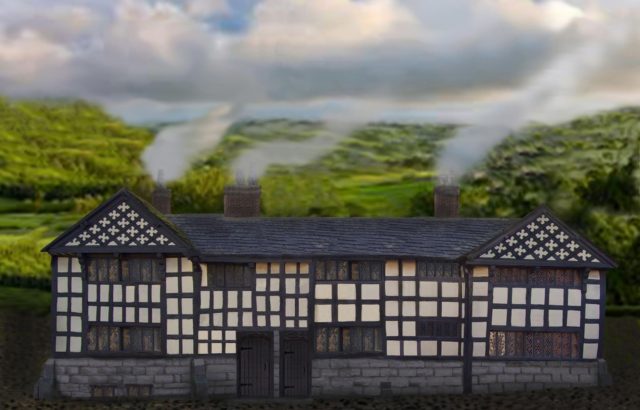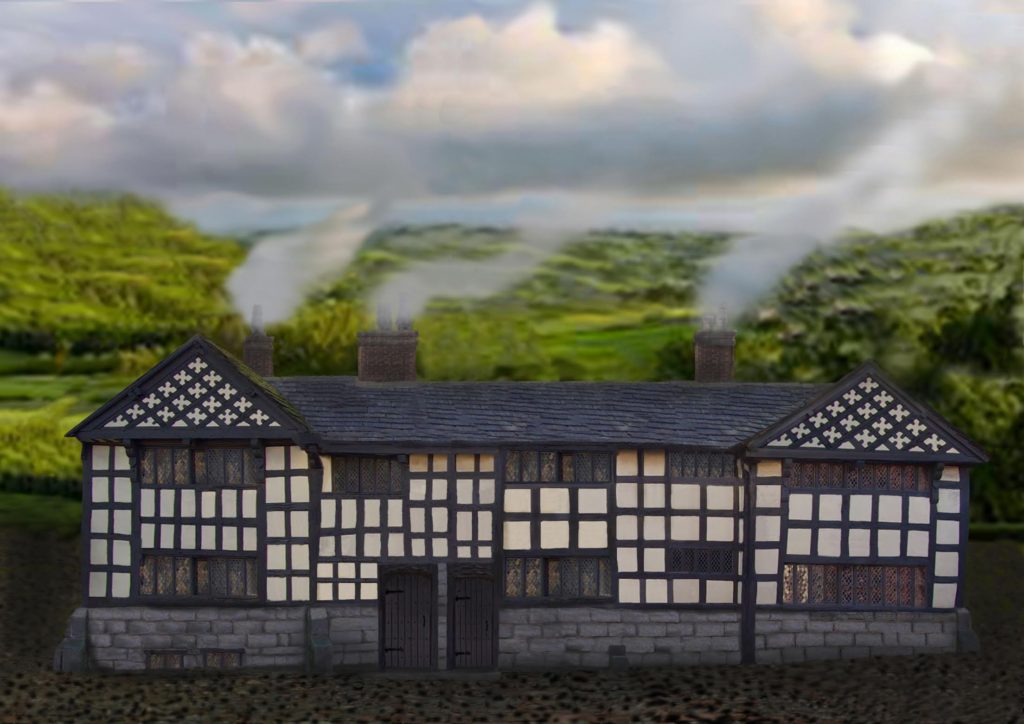
DAY TWENTY THREE
All done, just need to fill in the hole and dismantle the compound tomorrow. The dig was an outstanding success with an average of 7 volunteers on site each day. We didn’t expect to find so many features some of which will need full investigation at a later date. I think we deserve a bit of a rest now.


DAY TWENTY TWO
Was the wettest day we have had so far. Fortunately most of the clean up was done yesterday and were were able to continue recording under the gazebo. Open day and the big reveal tomorrow. All volunteers would be welcome to join the end of dig beer at three PM.


DAY TWENTY ONE
Blog master missed day twenty but good progress continues. We have decided to leave the hearth alone for now. It could be one of the earliest features on the site so we will come back and excavate it next year. The find processing machine (Martin, Anne and Liz) are struggling with the large amount of material we are bringing out of the trench. The rest of the Time-team are working hard to have everything ready for the Sunday evening backfill.


 DAYS EIGHTEEN AND NINETEEN
DAYS EIGHTEEN AND NINETEEN
Hectic days, another drain found, lots of drawing and context recording going on. We are hoping to have it all spic and span for the open day on Sunday. The photo shows Church House in the background.

DAY SEVENTEEN
Lots of progress today with several key features being cleaned and drawn. The drain in the NE corner is done as well as the western side of the cobbled path. The path appears to travel from St Leonard’s square to the rear of the pub but may have been truncated at some time. Rob and Geoff managed to get to the bottom of the pub cellar, unfortunately there is no beer there! The cellar walls are made of early hand made bricks, possibly Tudor. Class 6 of Middleton Parish school visited the site today and were most impressed.
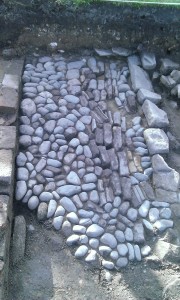
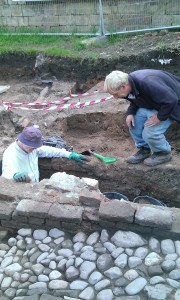
DAY SIXTEEN
A lovely sunny Sunday at St Leonard’s today. It’s great for us to get the support of the churchgoers as they peep into our hole and ask “have you found anything yet?” Well yes, a pub cellar, a cobbled pathway, a drain, a hearth, lots and lots of clay pipes and pottery sherds. We’ve not quite managed to interpret how they relate to the history of the site yet, but we have a week left to do this. The MAS dig is turning out to be one of the most interesting archaeological investigations in Greater Manchester this year. Why not pop down and join in?




DAY FIFTEEN
Bob and me are truly nackered so we’re having a break tomorrow. The archaeology is really intriguing at the moment so we are not really revealing too much on Facebook as we cannot be certain what we are finding. Perhaps you may wish to review what we are excavating and look at the only photo of the Church House farm and a later painting. We really need help on this dig, so please get your scruffs on and come down and get dirty with Mas this Sunday.
Church House Farm was demolished in 1898, but was built on the remains of an earlier Alehouse known as the Grapes Inn. Middleton’s famous radical, Sam Bamford described the Alehouse in his 1849 book “Early Days, Life of a Radical.
“Outside of the (Church) yard wall, towards the north, stood an old thatched timber and daub house, which one entered down a step, through a strong low door with a wooden latch. This was “Old Joe Wellins’s,” the church alehouse; a place particularly resorted to by rough fellows when they had a mind to a private drinking bout. The sacred edifice itself is dedicated to Saint Leonard, the patron of thieves, and whether or not thieves and outlaws felt more assured than common under the wing, as it were, of their saint, it was a current tradition in my younger days, that more than one of “the gentlemen roadsters ” who lived by levying contributions on the northern highways, made it his “boozing ken,” or place of concealment and repose after their foraging expeditions: Nevison and Turpin were especially mentioned as having frequented this house. When this old building was pulled down several curious antique coins were found; of what date no one who saw them could tell. ”


DAY FOURTEEN
A good turnout today. We have started to empty part of the cellar and progressing work in the north west corner. Some more pics tomorrow. Don’t forget, the dig is closed on Saturday.
DAY THIRTEEN
Unlucky for some? Well no, we keep on finding features, these are the chunks of masonry or soil/clay/rubble that we don’t understand but try to interpret. What were our ancestors doing there? Drains, fireplaces,cellars, cobbled surfaces all seem to be appearing in the hole. Trowels are now being applied in earnest. Site is open Thursday,Friday and Sunday but we is chilling out on Saturday dudes!

DAY TWELVE
A bit of a coat-on, coat-off day today but we made good progress in recording the various levelling layers that were laid before the farm became a recreation field. Some lovely walls and cobbled surfaces are now making an appearance. Some of the finds have been really good and include a jewelled cross and a miniature three handled drinking cup or TYG. The dig is open all week but will be closed on Saturday.



DAY ELEVEN Bank Holiday Monday
Where are you all? Four of the time team managed to crawl out of bed this morning with another two joining after lunch. We estimate that we need to move over 1,000 wheelbarrows of soil out of the hole during the course of the dig. We have probably moved about a third of this with less than two weeks remaining. The only problem is that we are now filling the barrows using trowels instead of spades! HELP!
Some interesting new features are now appearing including a wall and a stone drain. We have identified medieval pottery shards in the topsoil, let’s hope we find them lower down as well.


 DAY NINE
DAY NINE
Work to clear back and interpret previous excavations continued today. A few good finds to clean and catalogue.
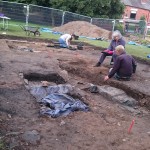
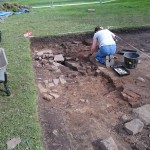
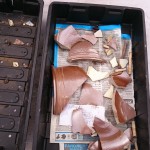
DAY EIGHT
No digging today, a well deserved day of rest. However, we do have a new banner sign, thanks to Ainsley Signs for all their help creating it.
The dig re-starts tomorrow morning (Saturday 29th August).

DAY SEVEN
A day of further analysis as we attempted to find and plot all the digs that have been undertaken previously.
A stone wall was uncovered towards the north west side of the site.
The MAS Chairman turned up and did a bit of digging too, which is quite unusual!
Lots of passers-by today, asking lots of questions about the site and it’s history.
The dig is closed tomorrow (Friday 28th August) but will re-open on Saturday.
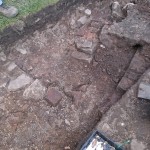
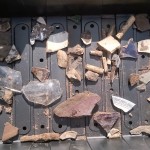
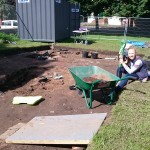
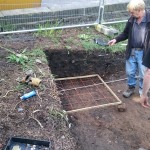
DAY SIX
The trench is a bit of a mess as we try to locate the previous years test pits. Instead I have enclosed a picture of last Sunday’s dig. Our digs are very much for the benefit of the community so it was nice to have several families join in. We don’t normally encourage sitting on trench edges! Geoff W is the only one taking it seriously.
The dig is closed this Friday (28th August) but is open the rest of the Bank Holiday weekend.

DAY FIVE
The trench looked gorgeous this morning in the sun. Just one thing missing? Watch this space as we take off context 504 (a levelling layer below the topsoil )and reveal some foundations. 13 attendees today including 2 teenage time team fans having their first go at archaeology. ” I’ve found another pipe Robert”

DAY FOUR
Some more interesting finds coming out as we begin to approach the archaeology. Photographs and description done by Bob on the night shift.
The “Auf Weidersehen My Dear” badge was designed and patented in 1932 to promote a song of the same name written by Al Hoffman and Ed Nelson and performed by Russ Columbo in 1932. The badge was manufactured by Miller, 18 Branston St. Birmingham.

The Boys’ Brigade badge was issued to celebrate the coronation of Queen Elizabeth II in 1953.


DAY THREE
Sunday 23rd August, a good turnout today with several families enjoying the warm weather. Our finds processing team were very busy particularly with the clay pipes. Still on context 501.

DAY TWO
Some really useful archaeology graduates turned up today (Robert and Jordan). After being incentivised with the offer of afternoon donuts the pair made light work of raising the turf. There has been a wide selection of finds in the top soil including a coconut and Lego man, also black ware and a nice piece of slip ware.


 DAY ONE FINDS
DAY ONE FINDS
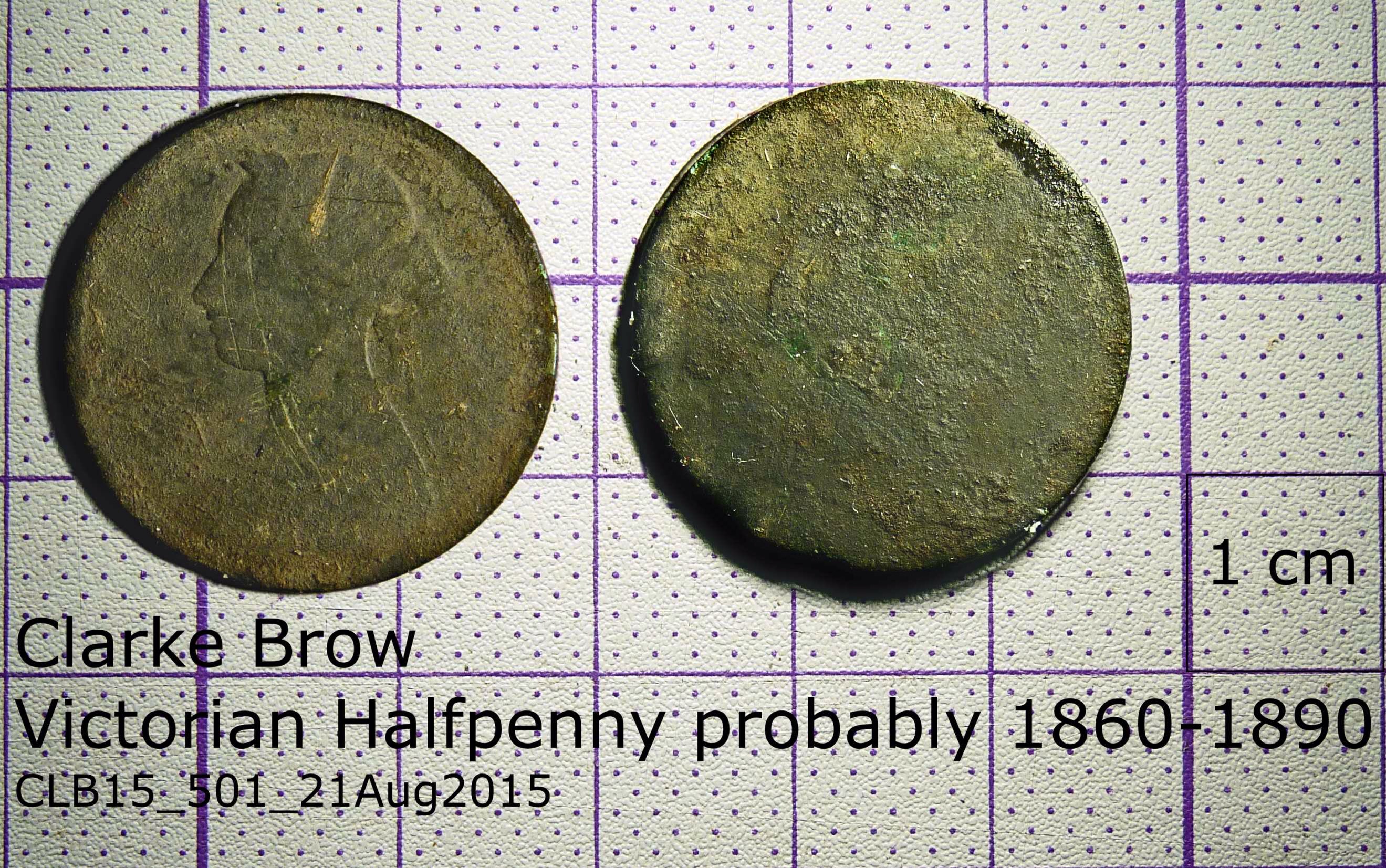
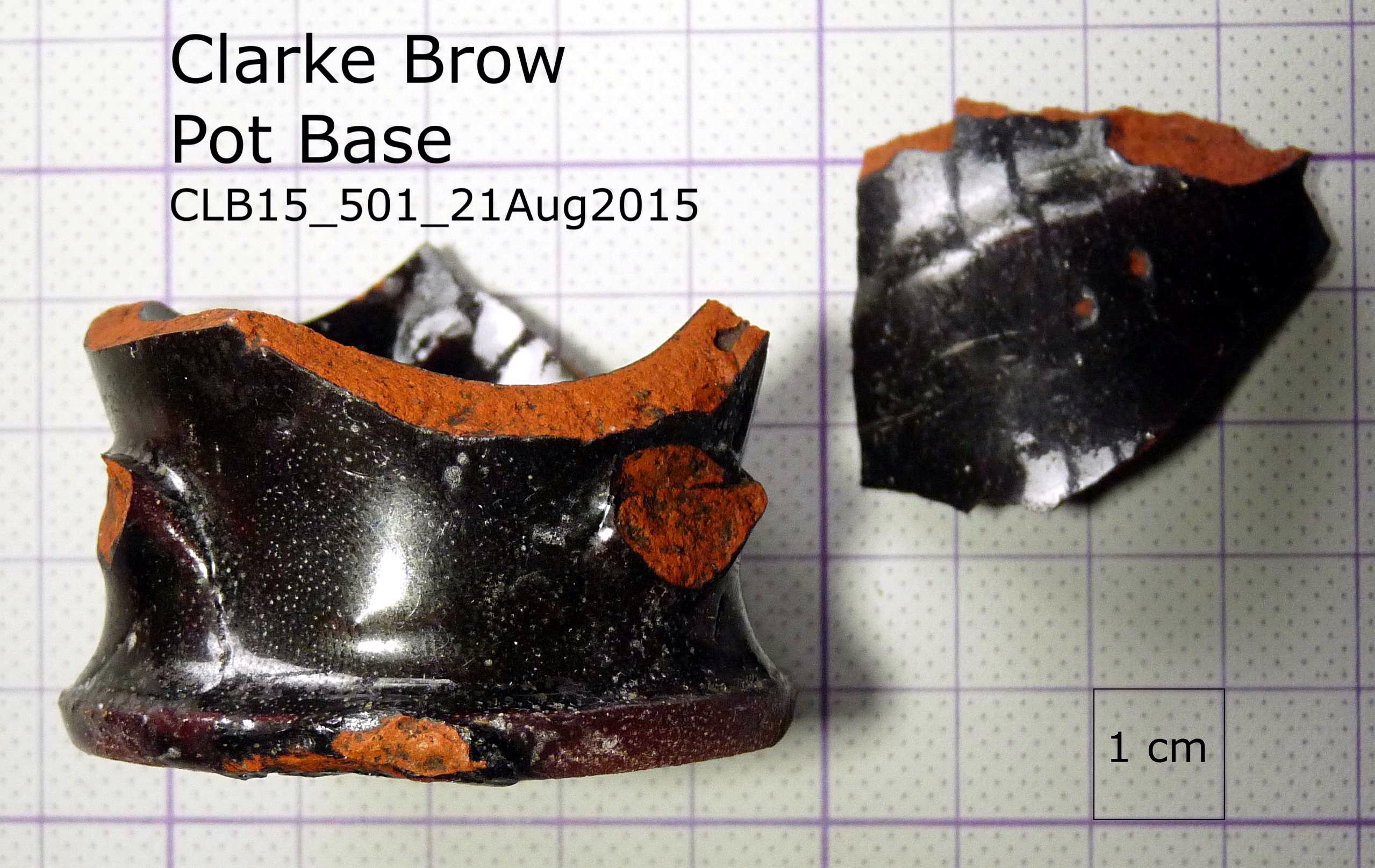

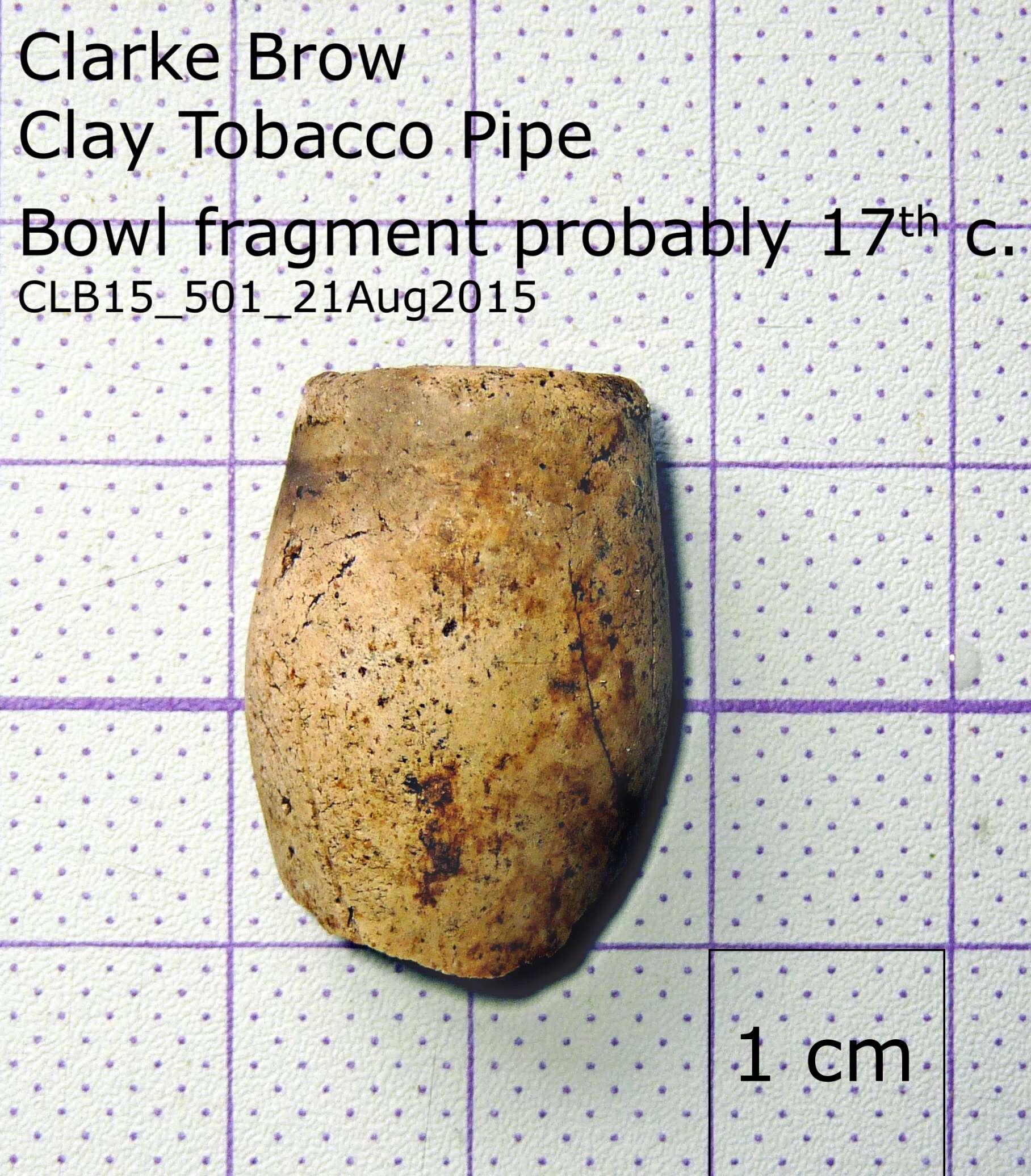
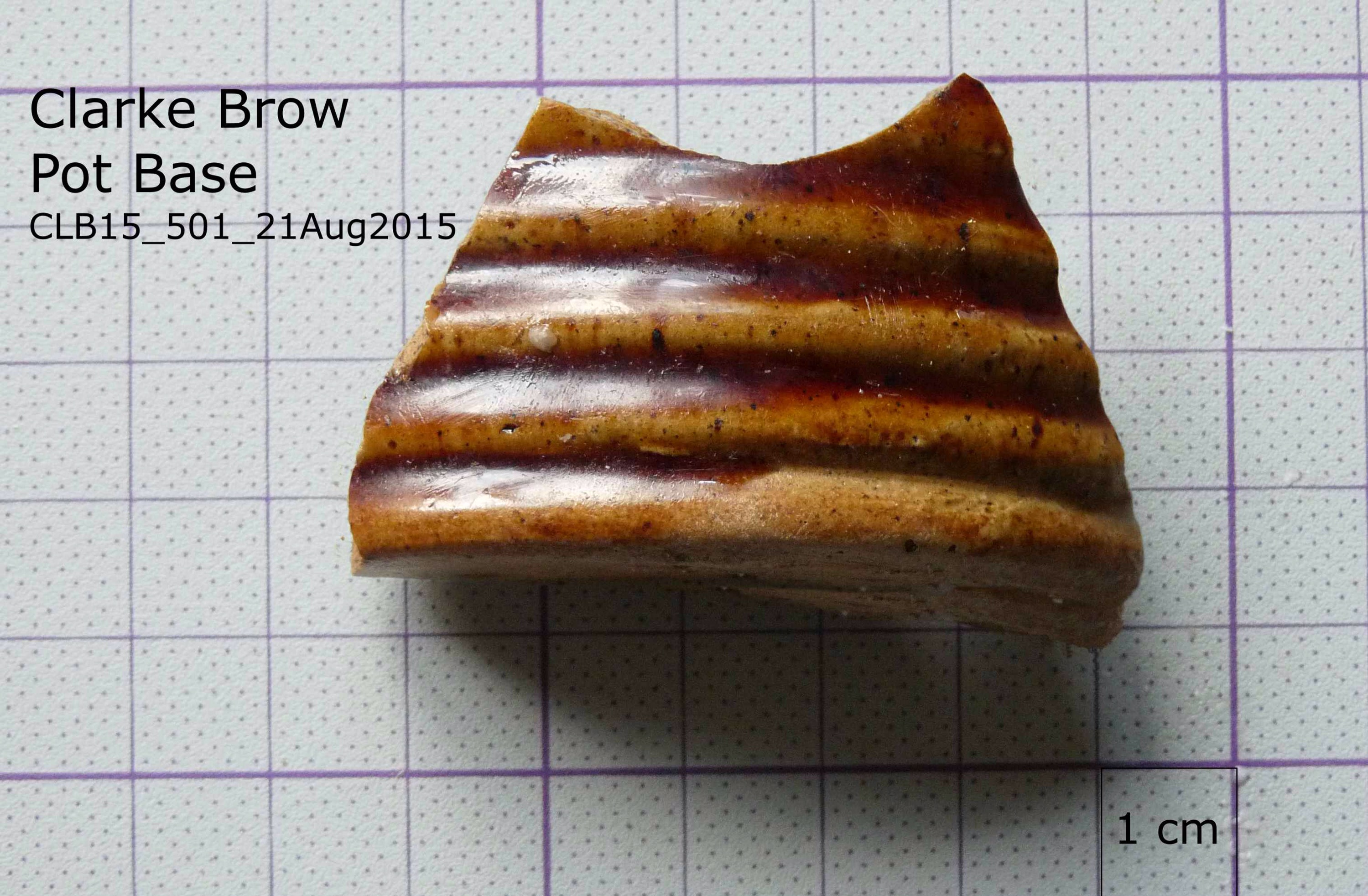
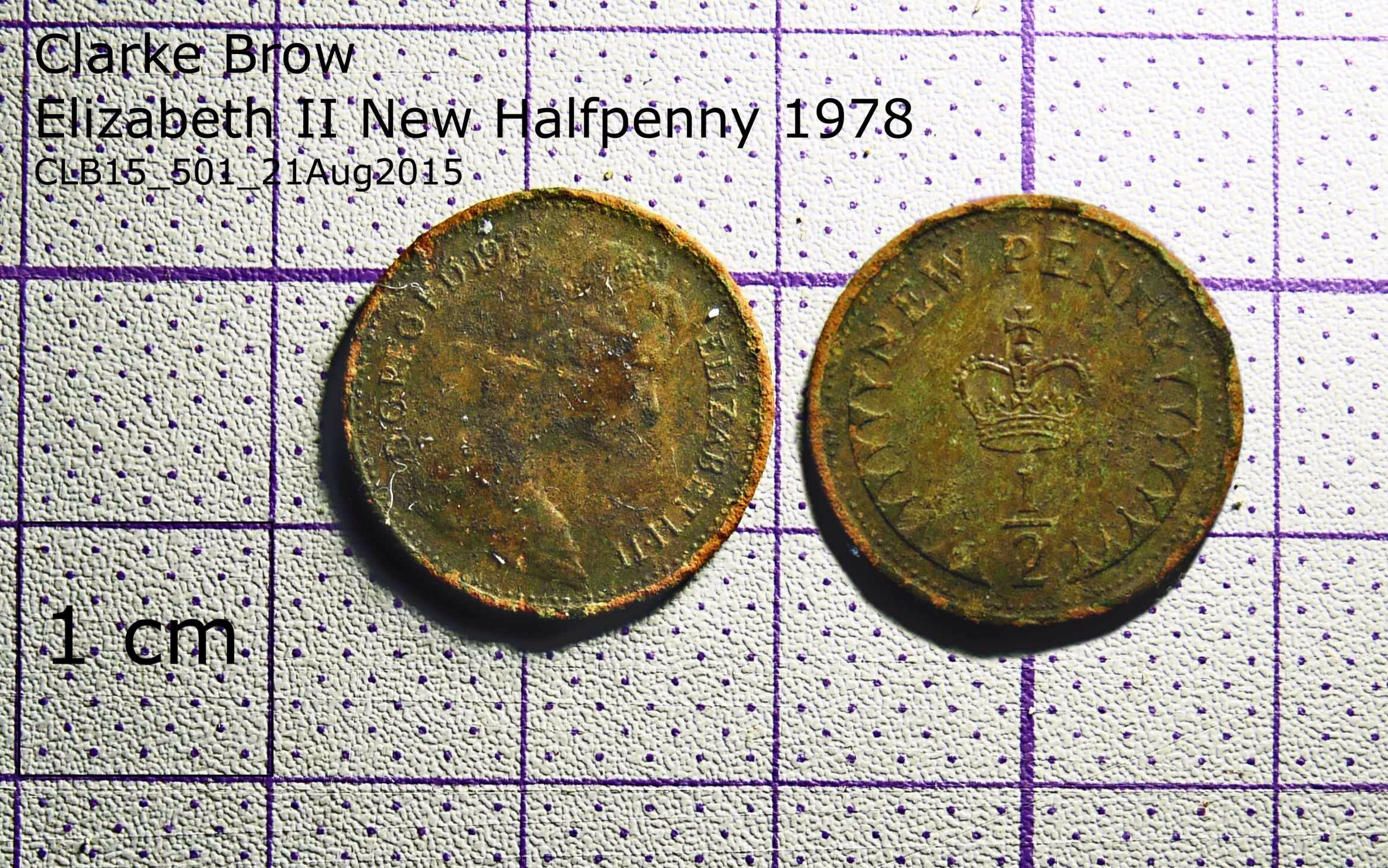
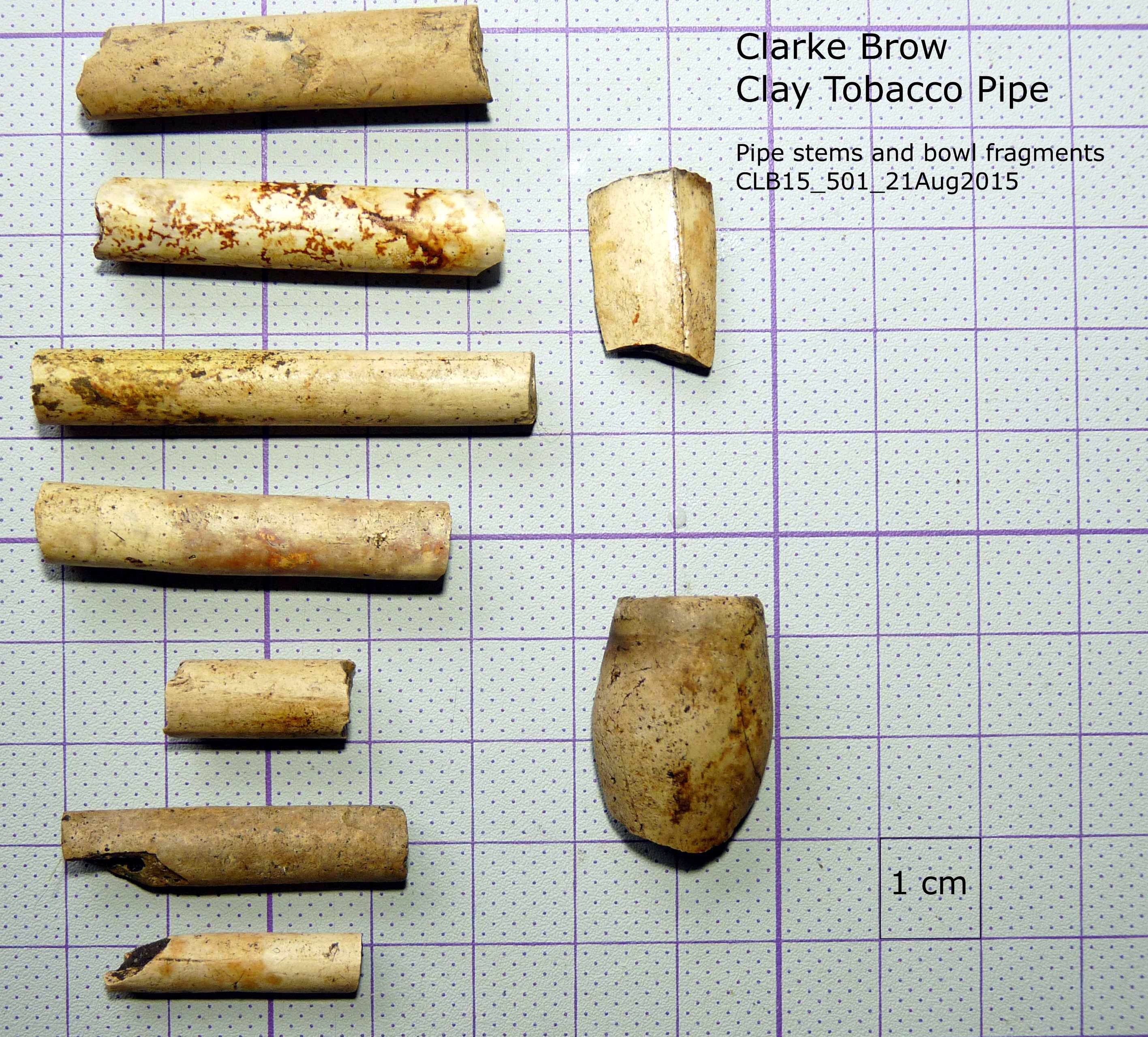
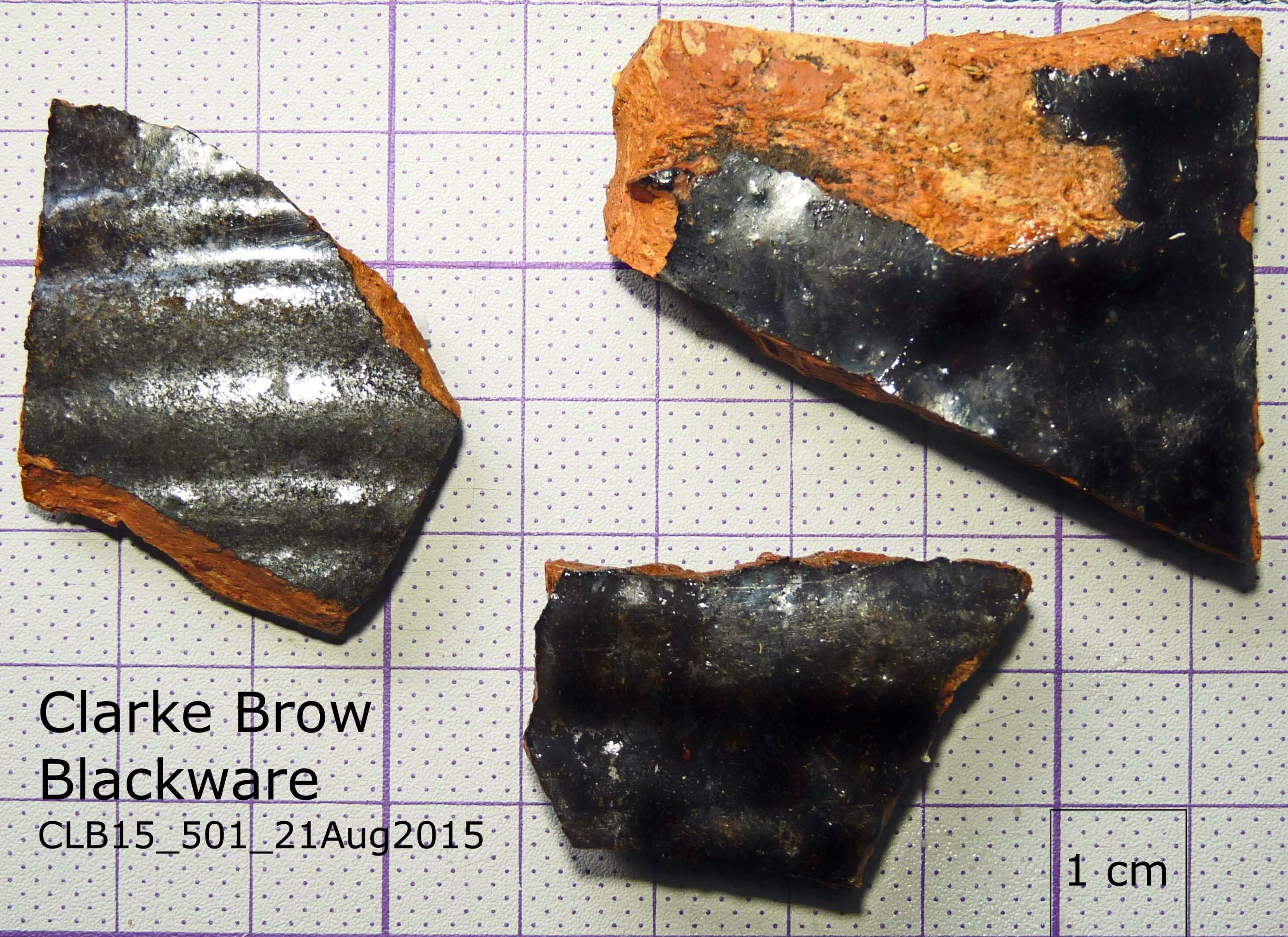 MAS began our largest archaeological event ever today (21/08/15) at the gates of St Leonard’s Church. We are opening a large trench to record the remains of Church House farm which was demolished in 1898. The farm was built on the remains of the Grapes Inn, described by Sam Bamford as a small thatched building that was the meeting place of thieves and villains! Previous test pits by MAS have located the cellar of the pub and a selection of pottery sherds dating back to the mid 17th century.
MAS began our largest archaeological event ever today (21/08/15) at the gates of St Leonard’s Church. We are opening a large trench to record the remains of Church House farm which was demolished in 1898. The farm was built on the remains of the Grapes Inn, described by Sam Bamford as a small thatched building that was the meeting place of thieves and villains! Previous test pits by MAS have located the cellar of the pub and a selection of pottery sherds dating back to the mid 17th century.
The event is a community dig so everybody is welcome to come along and have a go.

Like this:
Like Loading...

